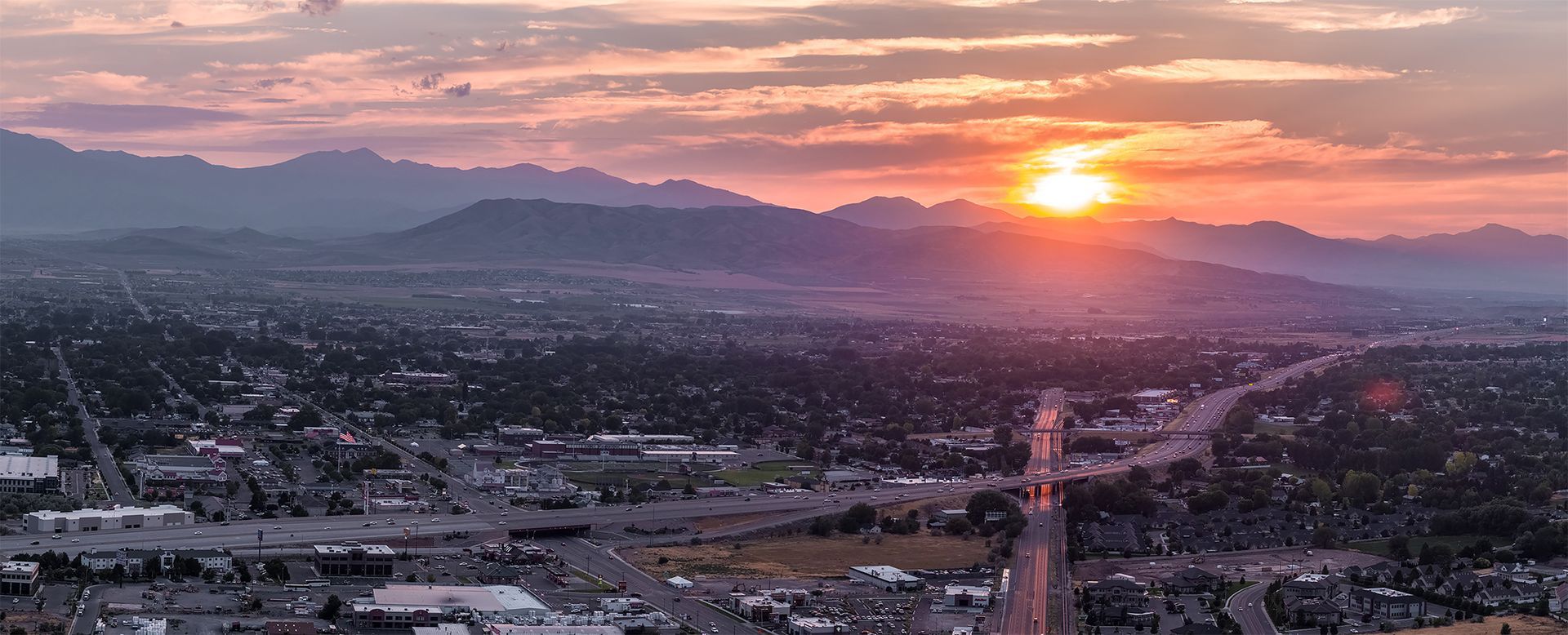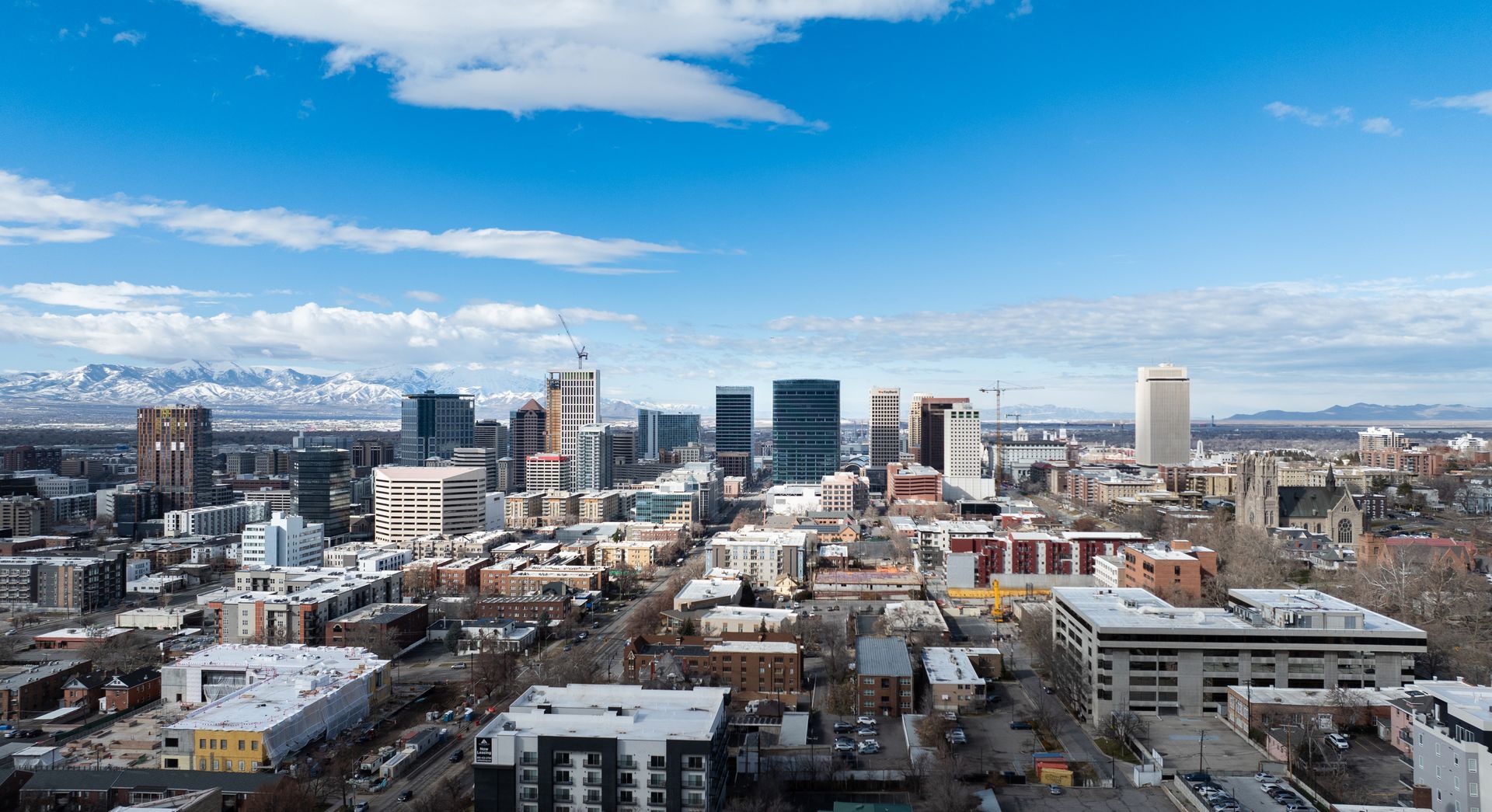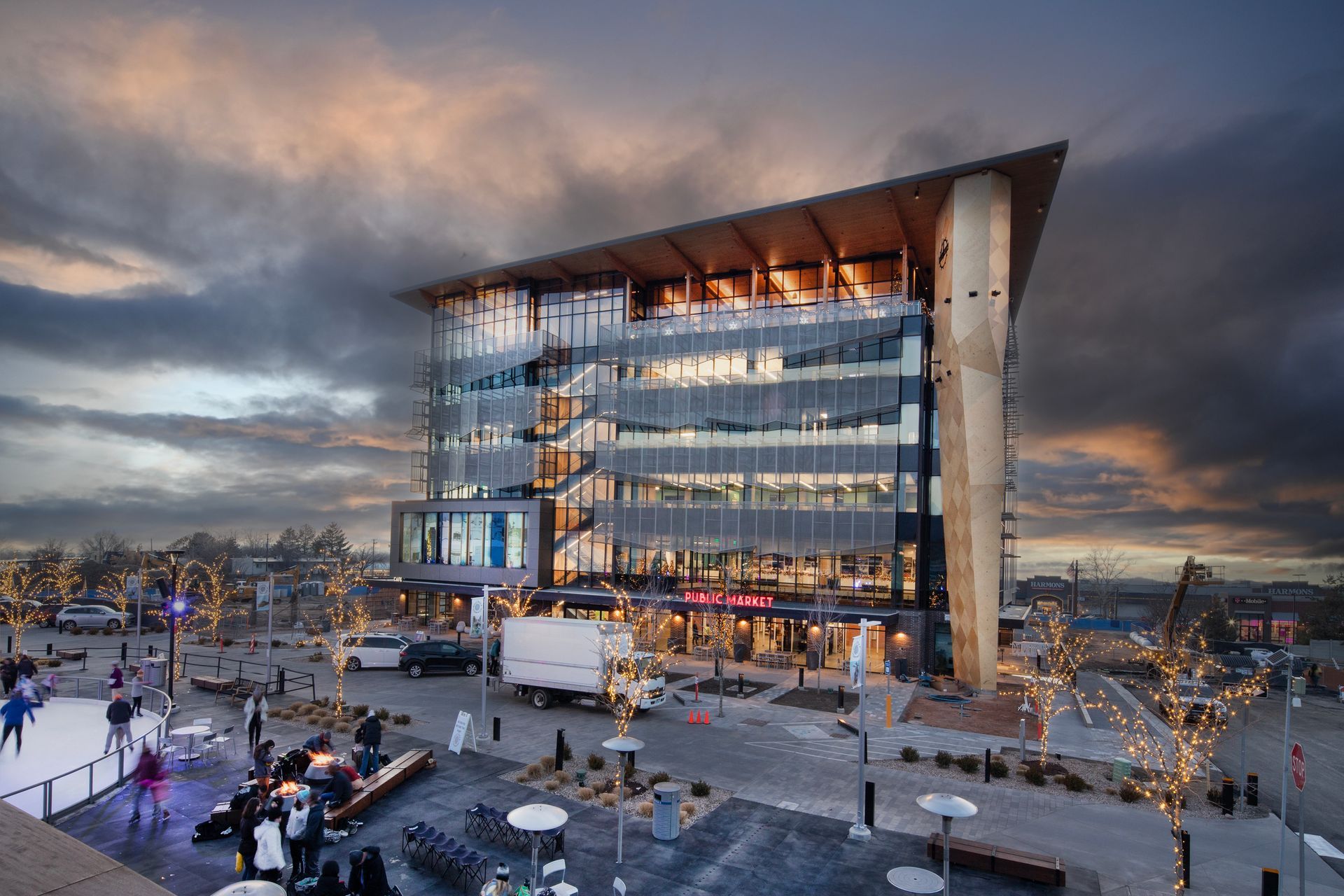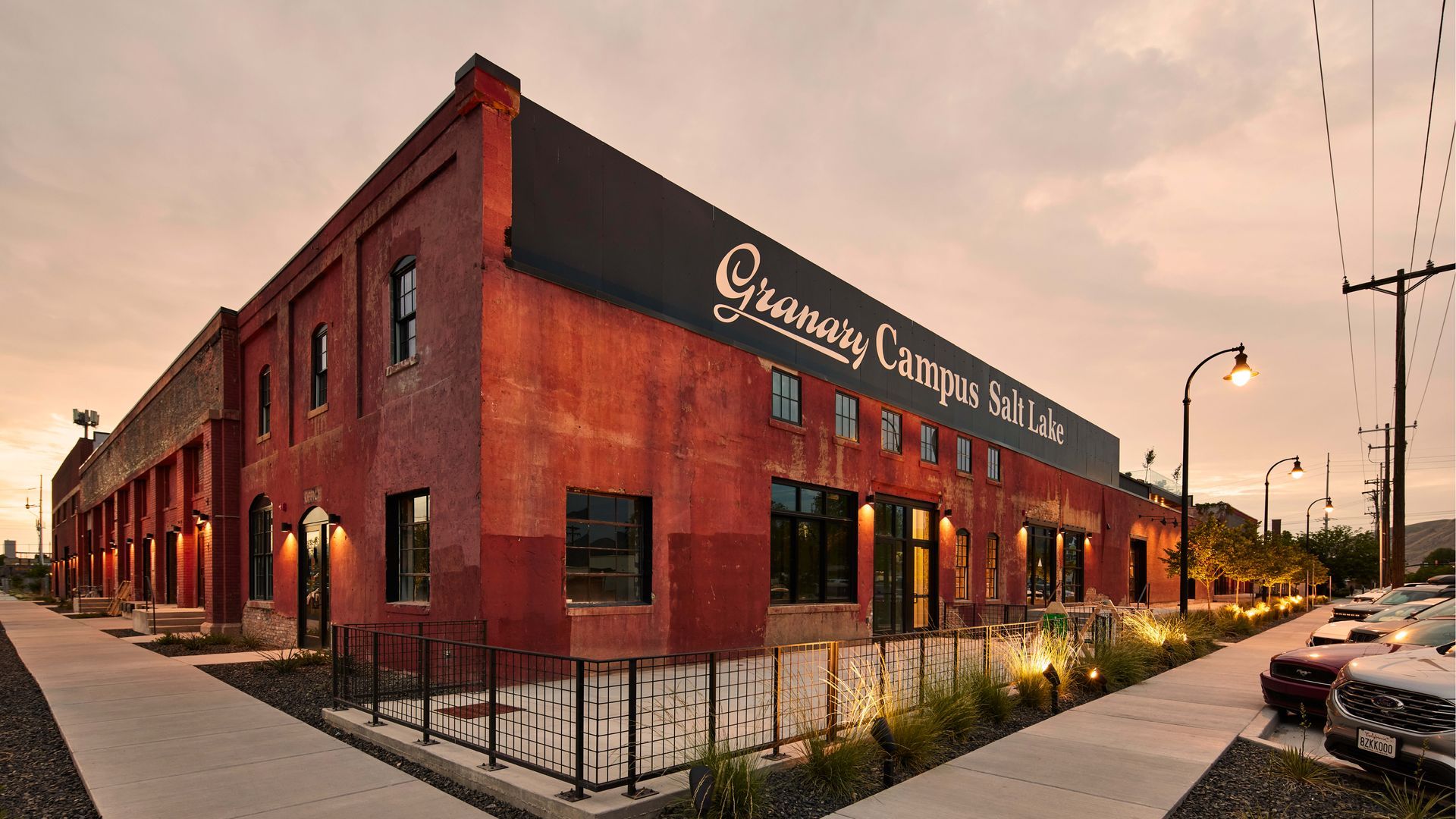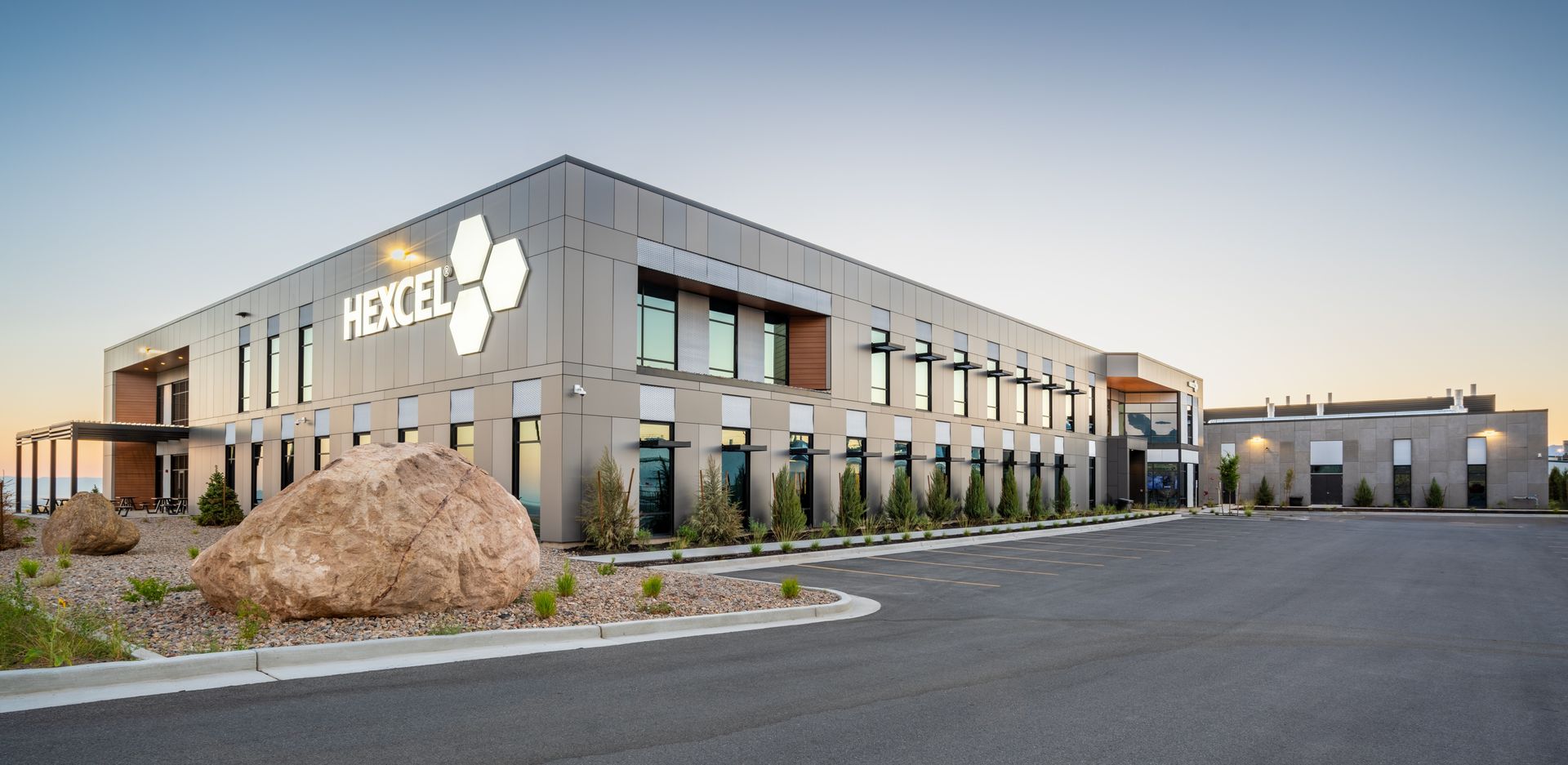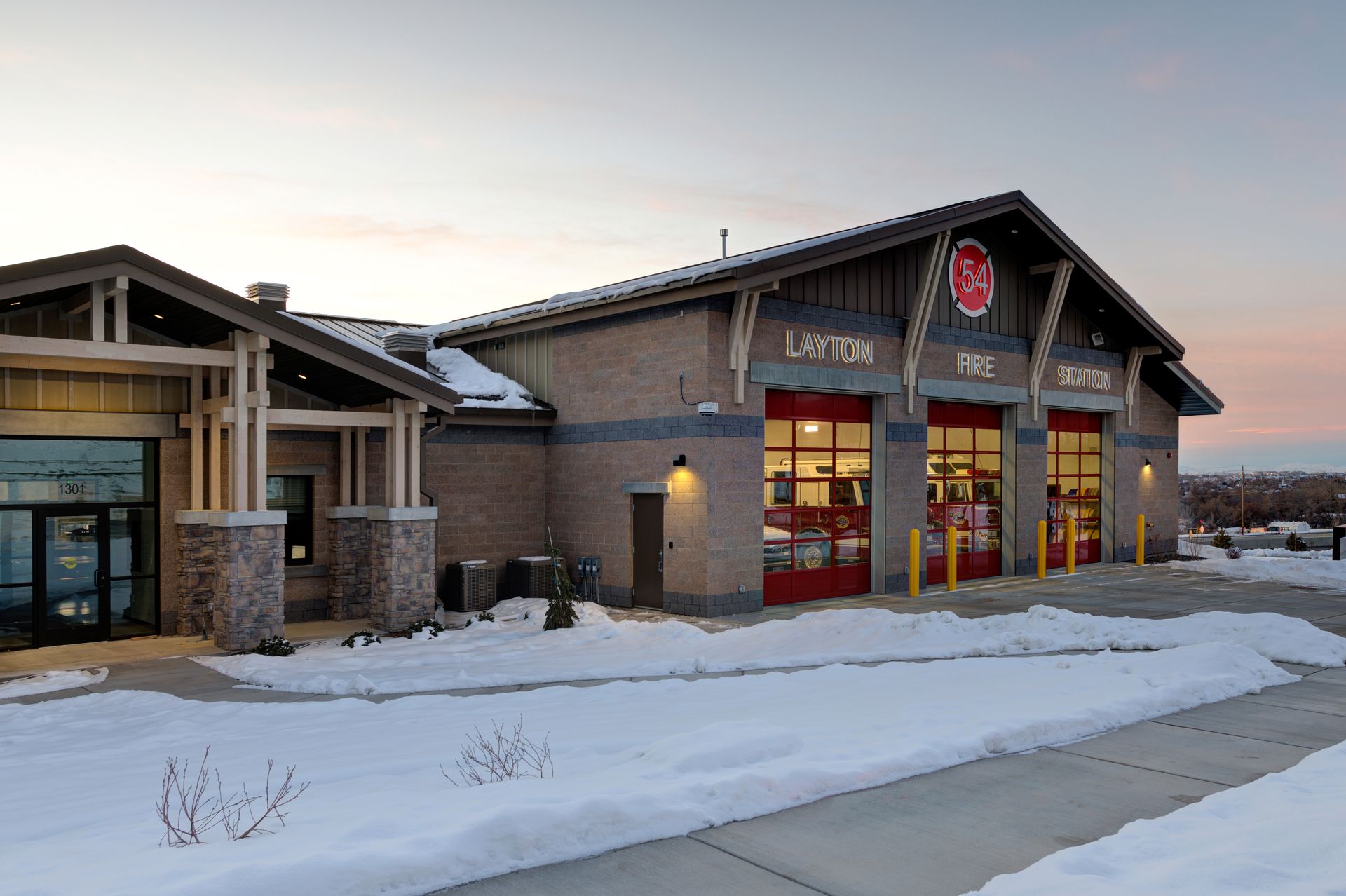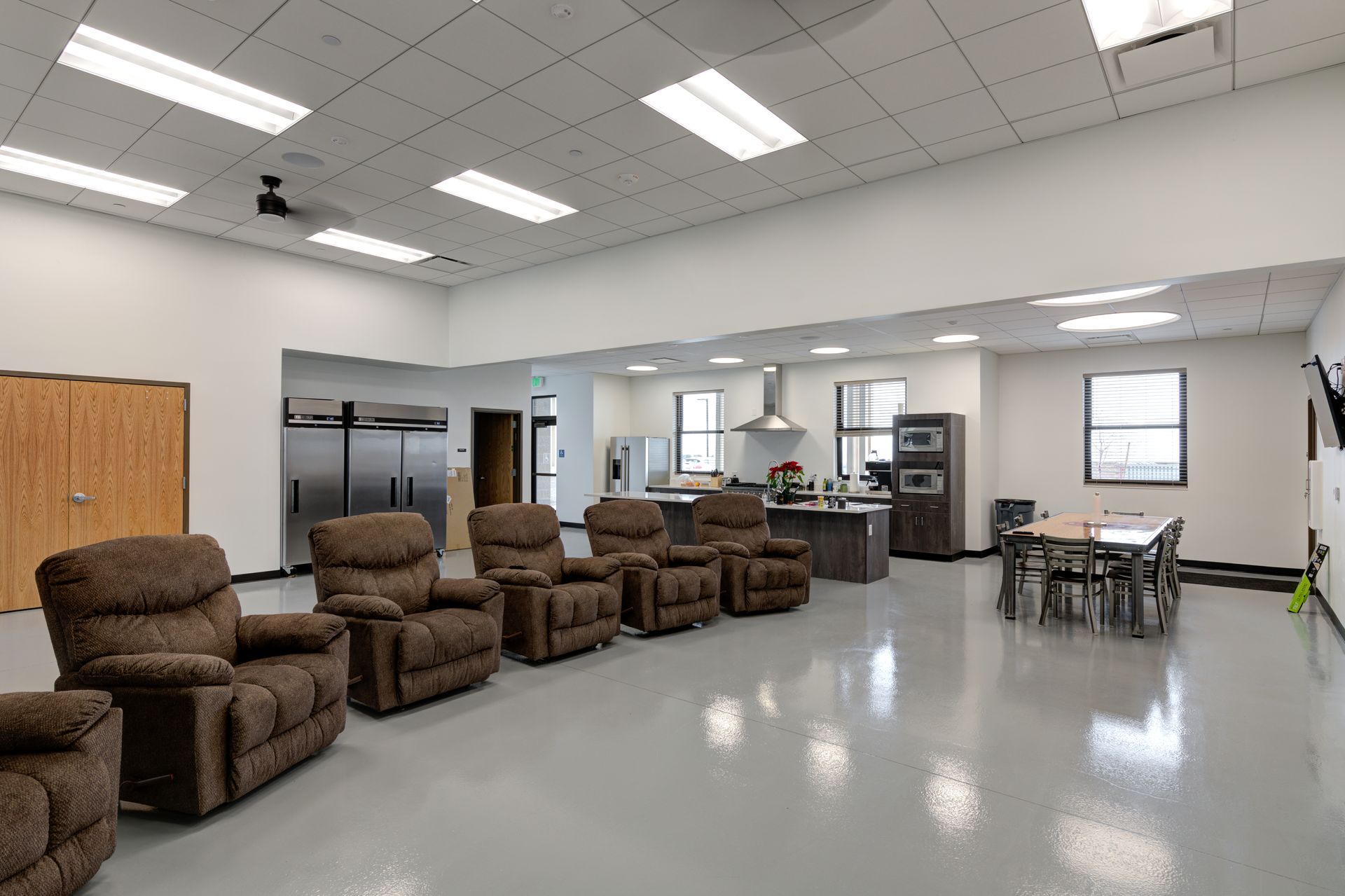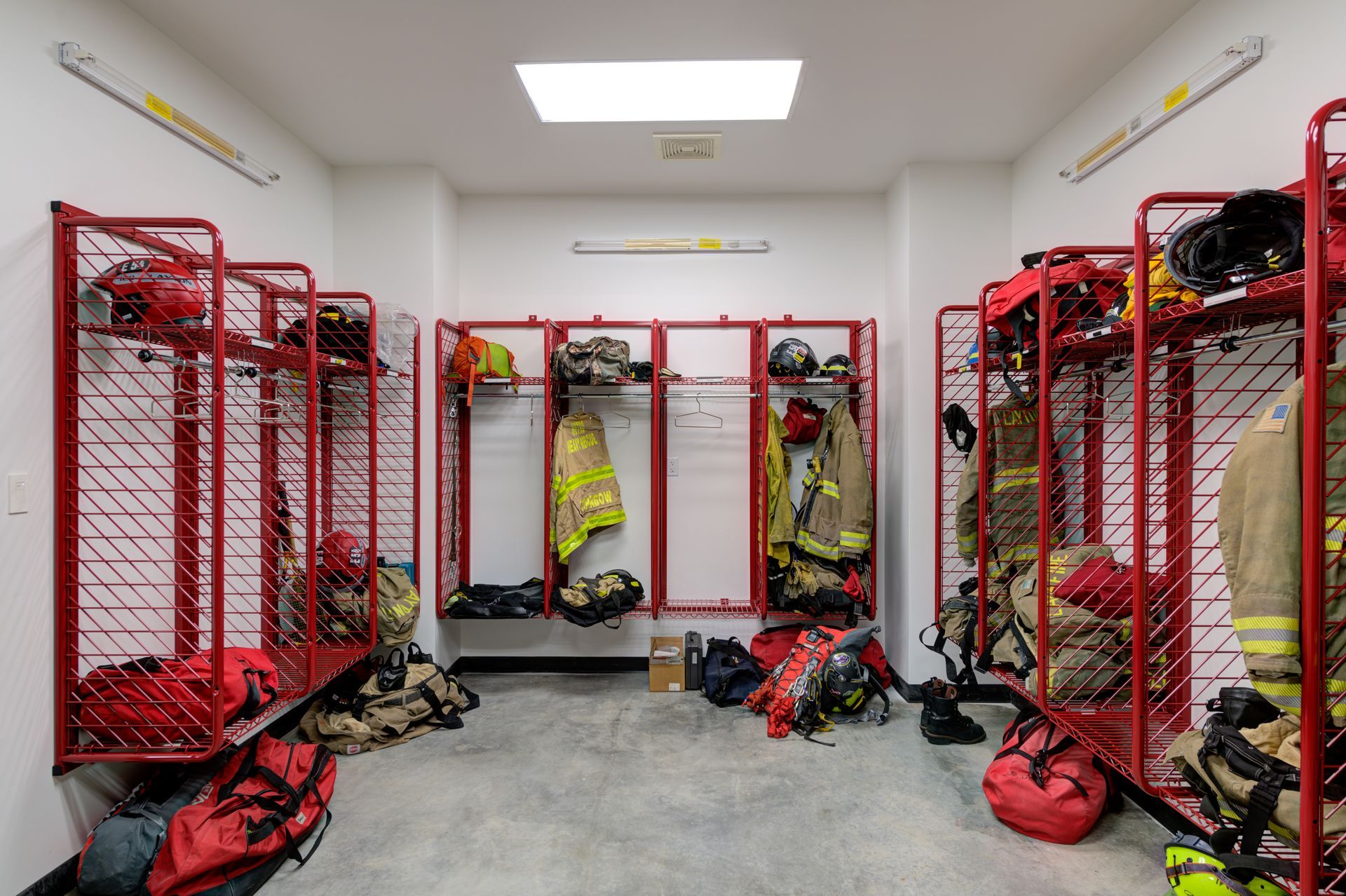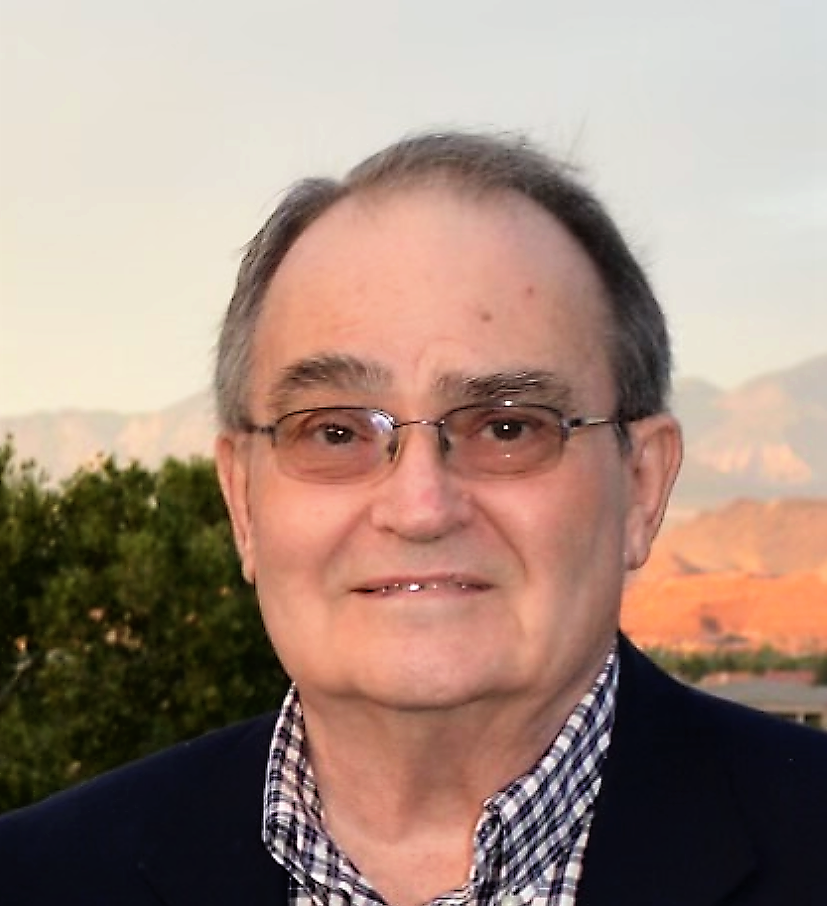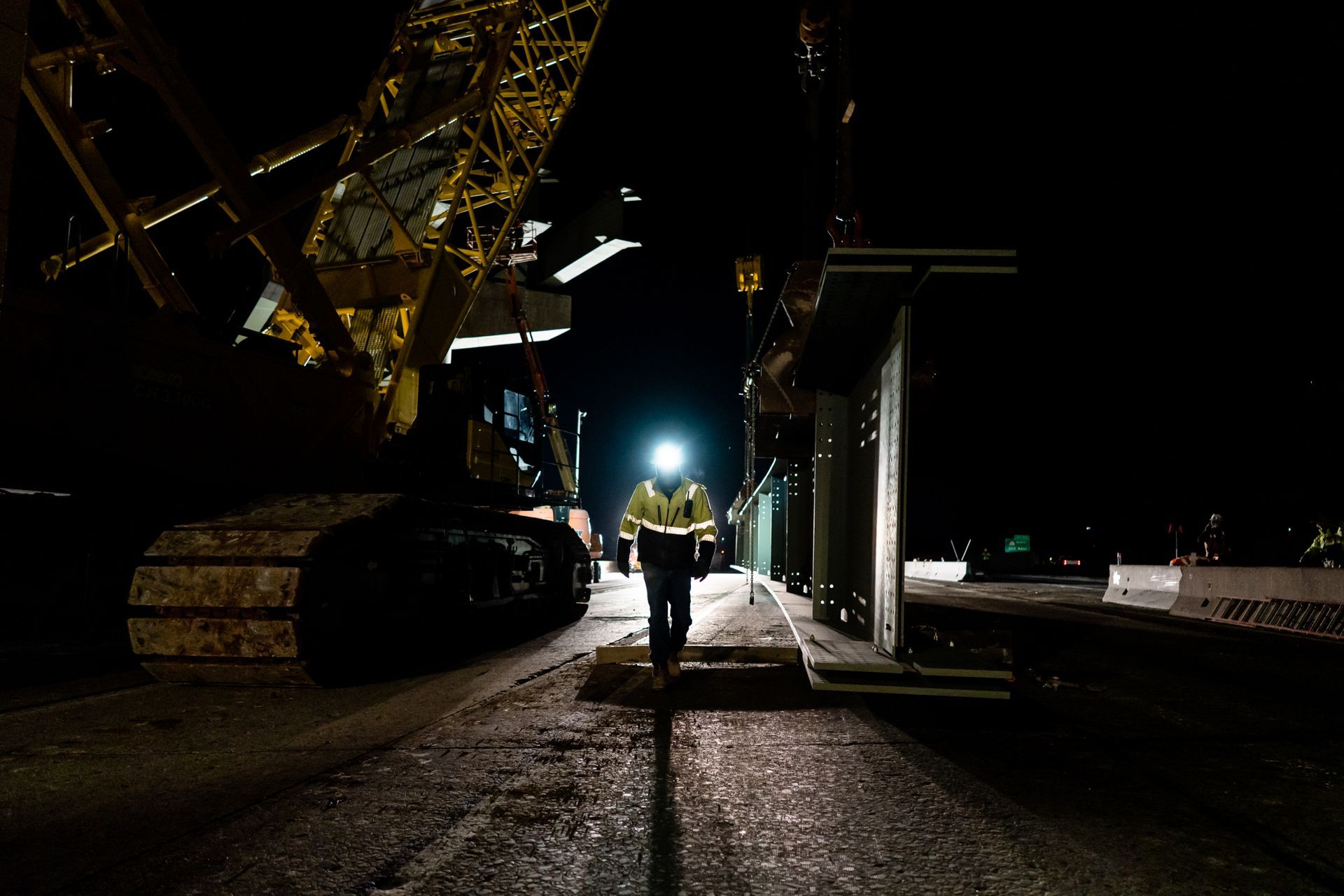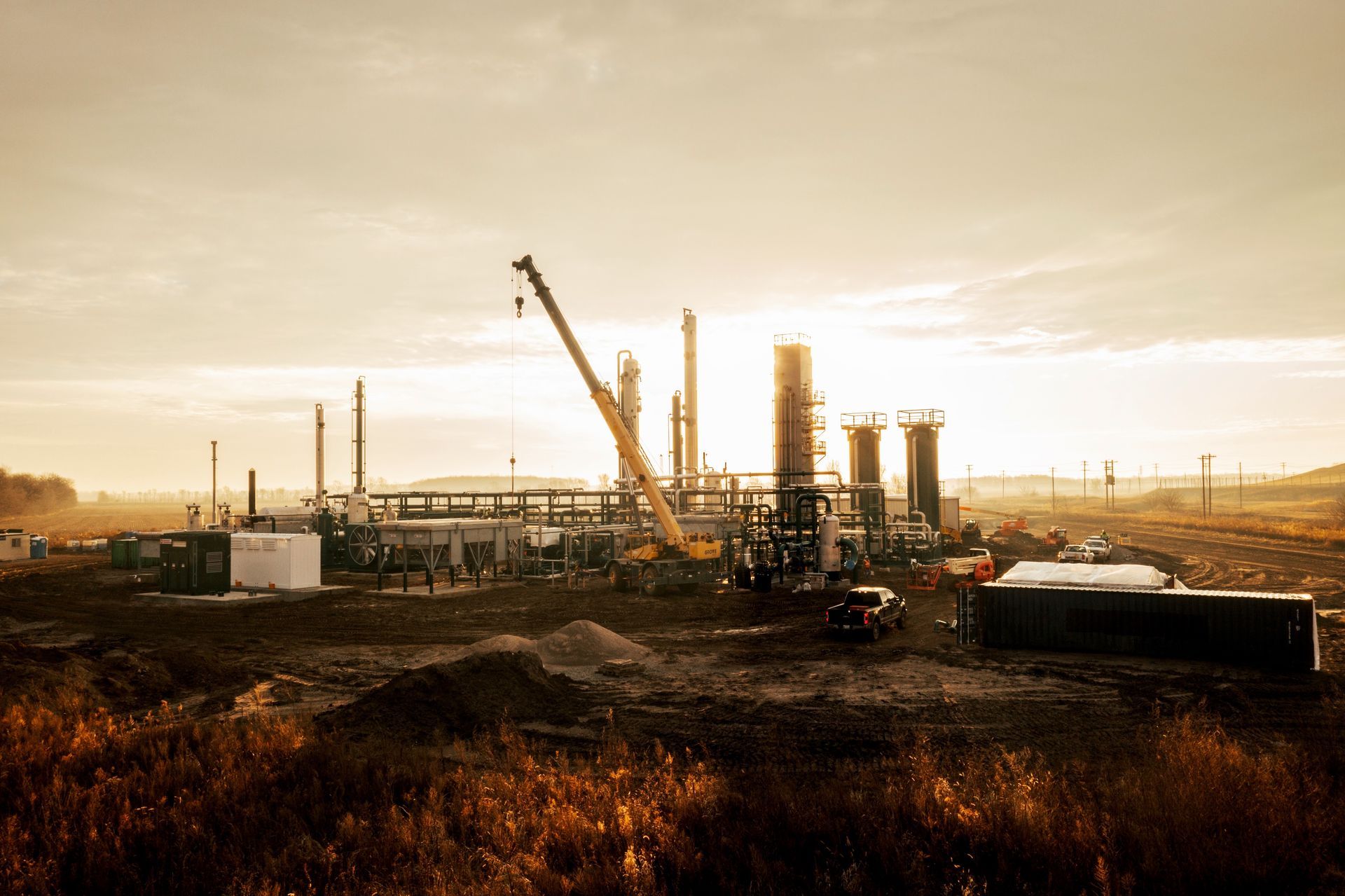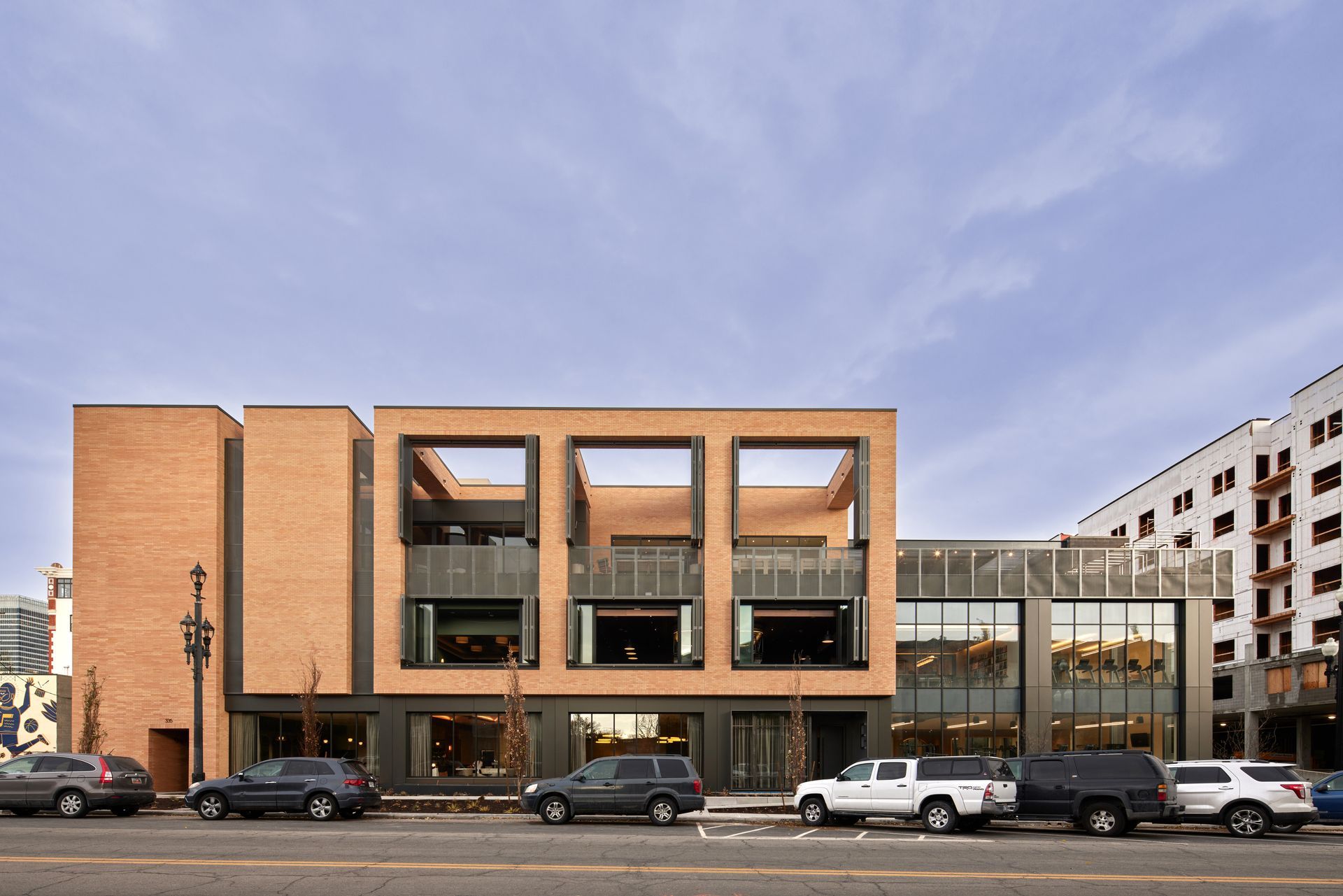Dynamic new fire stations are sprouting up across the Beehive State to handle rising population demands, with an emphasis on firefighter health and safety and maximizing space utilization. By Taylor Larsen and Brad Fullmer
Layton City Station 54 overlooks the city from the east bench. The meeting room and gear storage and cleaning room were designed to prioritize utility and safety for the firefighters. (Layton City Station 54 photos by Endeavour Architectural Photography
Functional Amenities for Functional Space
Even as the owner prioritized value over vanity, there is plenty of beauty to this building as it looks down from its hillside perch onto US-89. Masonry products make up 85% of exterior wall finishes, with darker beige and charcoal coloring of the four-inch honed block offering a nod to the nearby mountains the history of fire station design.
Long roof overhangs give the building a sense of depth and grandeur on approach. Visible timber at the main entry and rear patio combine structural needs with a lovely visual approach. Firefighters can look out from the fire station’s west-facing patio into the valley and feel the pride in their public safety role.
Seven bedrooms occupy the residential side of the firehouse, with spacious, single-elevation shower bathrooms providing a charming aesthetic for their multifaceted purpose of keeping the firefighters clean.
New UFA Stations Focus on Occupant Health, Safety
Utah’s largest fire agency—Unified Fire Authority—is in the midst of a bonded $36.5 million, four-station building program that includes the recently completed $6.9 million, 16,635-SF Midvale No. 125 (December 2022) and three stations that will wrap up this year (Magna No. 102 and two stations in Eagle Mountain, Nos. 251 and 253).
According to Zach Robinson, UFA Assistant Chief and a 25-year veteran of the department, new stations are designed with a focus on overall firefighter wellness, along with maximizing internal space of each facility.
“Firefighter health and safety is rising to the top of priority lists—it’s a national trend—and we wanted to be on the front edge of that,” said Robinson. “It was a huge approach for us on this construction phase,” with stations designed around a hot, warm, and cold zone concept that aims to eliminate outside contaminants from entering work and living quarters by confining them to decontamination corridors adjacent to apparatus bays.
“The ideal situation is to get [firefighters] a shower within an hour,” he added. Air filtration systems and large ceiling fans also help process particulates in the air, and crew living quarters are pressurized so air flows out of the space. Hand and boot wash areas are also inside apparatus bays and gear is stored on rooms off the bay to further mitigate outside contaminates.
Station durability and space optimization/flexibility were also key design elements, with a goal of “no wasted space,” said Robinson. “All areas serve a purpose. We utilized durable materials, like polished concrete floors, to reduce maintenance costs. We have thoughtful designs by our architects which allowed us to shrink the footprint of the stations.”
Another important feature is highly durable training rooms—Robinson called them “hardened training spaces”—designed with concrete blocks that allow for real-life training situations without damaging the building.
UFA has nearly 700 employees that serve approximately 450,000 people in 15 municipalities, plus unincorporated Salt Lake County. In addition to fire suppression and rescue services, UFA provides advanced life support, first response and ambulance services, hazardous material response, bomb response, code enforcement, and emergency management for all of Salt Lake County.
Midvale No. 125 was the latest project for Salt Lake-based Paulsen Construction and proved arduous on the procurement side of the project.
“The biggest challenge we faced—which a lot of contractors are still facing—was the lead times for certain materials,” said Harold Saunders, Director of Business Development at Paulsen. “Electrical gear and lighting, along with glass, were a few of the items delivered to the project near the end. If you throw in weather delays, it can all wreak havoc on a project schedule.”
Strenuous, but satisfying for a firm that has built several fire stations in recent years and takes great pride in the importance of these facilities.
Saunders said, “When you look at how many stations we have built in the last six years, it has been very rewarding to be involved in these key projects.”
Stoker Reflects on Father’s Architectural Legacy
Robert Stoker, Fire Chief of St. George City since 1998 and a veteran of 30+ years experience, oversees a department that has grown significantly during his career. What once relied almost exclusively on volunteer help from the community is now a department of eight stations with full-time crews and several more in the works.
“It’s amazing the growth and service demand that’s developed the past 15-20 years,” said Stoker. “We’re still a combo department with full-time, part-time, and reserve firefighters,” adding that he was the first full-time firefighter hired by St. George City in 1992 (he had been a volunteer since the mid-80s).
Stoker also takes pride in the fact that his father, Leslie Stoker (who passed away May 2019 at the age of 79), designed several St. George fire stations, along with other key public buildings and the Tuacahn Amphitheater and Arts Center, over a notable 52-year career as an architect.
Leslie’s last fire station project was No. 9 in the city’s Little Valley area, a building that finished design in 2019. After being on hold for a couple of years, St. George-based Watts Construction completed the build in May 2022.
Stoker also said his father designed St. George No. 3 in Bloomington Hills, No. 4 in Bloomington, No. 5 in Green Valley, No. 7 at Dixie Downs, and No. 8 at Sun River.
“It’s pretty neat to have that tie with him,” said Stoker. “He (designed) a lot of stations throughout Nevada and Utah, along with government buildings and schools. It’s neat to drive around these different cities and see his work.”
Two new stations are currently in the design phase, including No. 10 near the Desert Canyons development off Southern Parkway near the airport and a replacement for No. 1 at the corner of 400 East 100 South in the heart of the city. Over the coming years, Stoker said another three stations will likely be needed to service the Tonaquint area, the Ledges off Hwy 18, and the Desert Color development.
St. George Fire Station No. 9 was the last of several stations designed by Leslie Stoker (pictured) in the region before he passed away in 2019. His son, Robert, has been Fire Chief of St. George since 1998. (courtesy Robert Stoker; project photo courtesy Watts Construction)
Layton Fire Station 54
Owner: Layton City
Architect: Think Architecture
Civil: Excel Engineering
Electrical: Spectrum Engineers
Mechanical: Spectrum Engineers
Structural: Calder Richards Structural Consulting Engineers
Geotech: CMT Engineering
Landscape: Think Architecture
General Contractor: Hogan & Associates Construction
Concrete: Hogan & Associates Construction
Plumbing: Norm’s Plumbing
HVAC: United Team Mechanical
Electrical: JP Electric
Masonry: Rocky Mountain Masonry
Drywall/Acoustics: MG Drywall / Golder Acoustics
Painting: Hegemann Paint Co.
Tile/Stone: Westech Tile
Carpentry: Trim Art
Flooring: Diversified Flooring, Inc.
Roofing: Rodac
Glass/Curtain Wall: Bountiful Glass
Waterproofing: Western States Waterproofing
Excavation: Hogan & Associates Construction
Landscaping: Lawson Landscaping
Midvale Fire Station No. 125
Owner: Unified Fire Authority
Owners Rep: Construction Control
Architect: ajc architects
Civil Engineer: Talisman Civil Consultants
Electrical: BNA Consulting
Mechanical: WHW Engineering
Structural: KPFF
Geotech: GSH Geotechnical
Landscape: ArcSitio Design
General Contractor: Paulsen Construction
Concrete: A-Core Concrete/Milestone Concrete
Plumbing: Robert W. Speirs Plumbing
HVAC: Stellar Mechanical
Electrical: Boshard Electric
Masonry: JH Masonry
Drywall: Mt. Olympus Construction
Painting: Allied Painting
Tile: John Caffall Tile
Millwork: MC Mill & Design
Flooring: Flooring Services
Roofing: Heritage Roofing
Glass: Mountain Valley Glass
Steel Fabrication: Dixie Fabrication
Steel Erection: Crockett Construction
Precast: Mesa Precast
St. George Fire Station No. 9
Owner: St. George City
Architect: Mesa Consulting Group & Desert Edge Architecture
Civil: Bowen Collins & Associates
Electrical: BNA Electrical Engineering
Mechanical: WHW Engineering
Structural: Provalue Engineering
General Contractor: Watts Construction
Concrete: Mountain States Contractors
Plumbing: Tom’s Mechanical
HVAC: Air Doctor Solutions
Electrical: HedgeHog Electric
Masonry: BA Robinson Construction
Drywall/Acoustics: B&S Drywall
Painting: Pacific Painting & Wallcovering
Tile/Stone: HB Flooring Solutions
Carpentry: Excel One Construction
Flooring: HB Flooring Solutions
Roofing: Flynn BEC LP
Glass/Curtain Wall: Faus Glass
Waterproofing: N/A
Steel Fabrication & Erection: Fab-Tec
